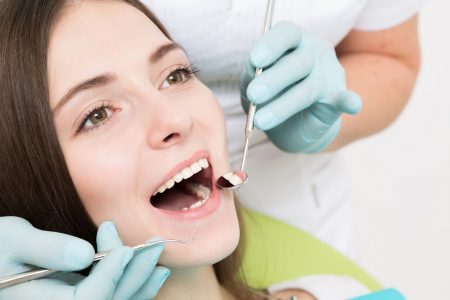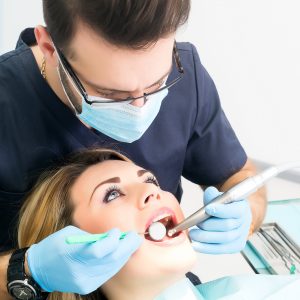Q: My husband grinds his teeth at night. Sometimes it drives me out of the room. What can we do?
A: The good news is that, yes, there are steps that can help your husband with his—and your—problem. The technical name for your husband’s condition is bruxism. Some experts estimate that as many as 10 percent of the population deal with this grinding. And that includes children right through the elderly.
The habit is not necessarily confined to nighttime. People who grind their teeth in their sleep generally have no idea they’re doing it. And they may wake up feeling fine, especially if they grind earlier on in their sleep cycle. Others, however, wake with some combination of jaw, shoulder and neck pain. Bruxism also can significantly wear teeth and loosen them. It can crack tooth enamel and chip or break teeth. During sleep, bruxism can cause a person’s jaw to clench at a pressure up to six times greater than the pressure during waking hours.
Causes of bruxism can vary. Stress, a sleep disorder, an abnormal bite or crooked or missing teeth all can be factors. The best person to talk to if you’re suffering from bruxism is your dentist. Whatever the cause, your dentist will know what step to take to deal with it. If it’s stress, for instance, it’s possible that physical therapy or counseling could help. Muscle-relaxing medication or a nighttime mouth guard, specially fitted by the dentist, may be the answer.
If you, your family or friends need dental care, we would be honored to provide you with state-of-the-art dental care in our modern dental practice. Refer someone you love to someone you trust!
Presented as a service to the community by Doctors Hoover and Yanda,
39 Milford Drive, Hudson, Ohio 44236. 330-650-0360. www.drshooverandyanda.com





 There are generally three phases to getting an
There are generally three phases to getting an 
 Did you know that the average adult between the ages of 20 and 64 has three or more decayed or missing teeth? If you are missing one or more teeth, there are plenty of reasons to correct the problem. For one thing, a large space between your teeth may affect how you speak or eat. Even if it’s not noticeable, a missing molar can affect how you chew. Remaining teeth may shift which can lead to tooth decay and bone loss.
Did you know that the average adult between the ages of 20 and 64 has three or more decayed or missing teeth? If you are missing one or more teeth, there are plenty of reasons to correct the problem. For one thing, a large space between your teeth may affect how you speak or eat. Even if it’s not noticeable, a missing molar can affect how you chew. Remaining teeth may shift which can lead to tooth decay and bone loss.  To perform the crown procedure, your dentist prepares the tooth and makes a molded impression or a digital scan of your teeth to send to a dental laboratory. A custom-made temporary crown is created during this visit to protect the tooth while the final restoration is being made in the dental laboratory. Once completed, the crown will be cemented or adhesively bonded at a second visit.
To perform the crown procedure, your dentist prepares the tooth and makes a molded impression or a digital scan of your teeth to send to a dental laboratory. A custom-made temporary crown is created during this visit to protect the tooth while the final restoration is being made in the dental laboratory. Once completed, the crown will be cemented or adhesively bonded at a second visit. Dental crowns, also known as “caps,” preserve the functionality of damaged teeth. This common dental restoration may be used to protect a cracked tooth, restore functionality of a tooth with excessive decay or replace a pre-existing crown. It protects a weakened tooth with a custom-designed material.
Dental crowns, also known as “caps,” preserve the functionality of damaged teeth. This common dental restoration may be used to protect a cracked tooth, restore functionality of a tooth with excessive decay or replace a pre-existing crown. It protects a weakened tooth with a custom-designed material.